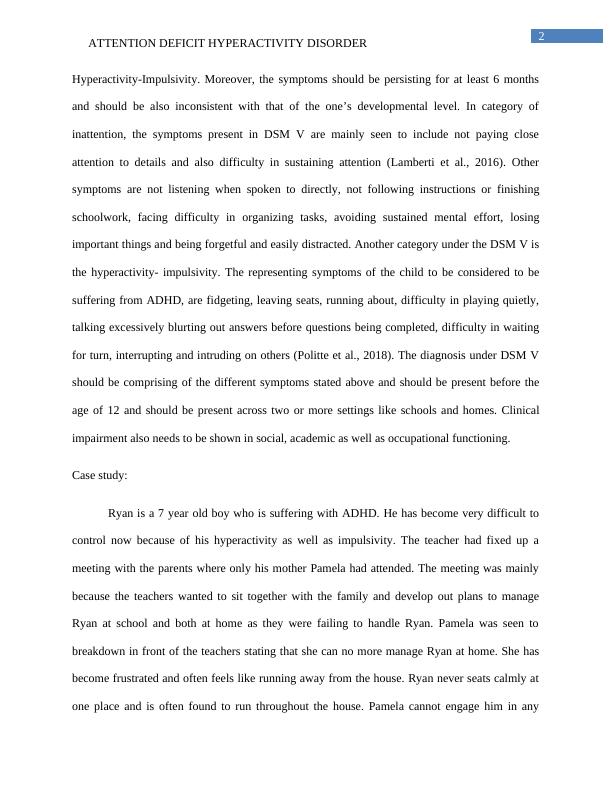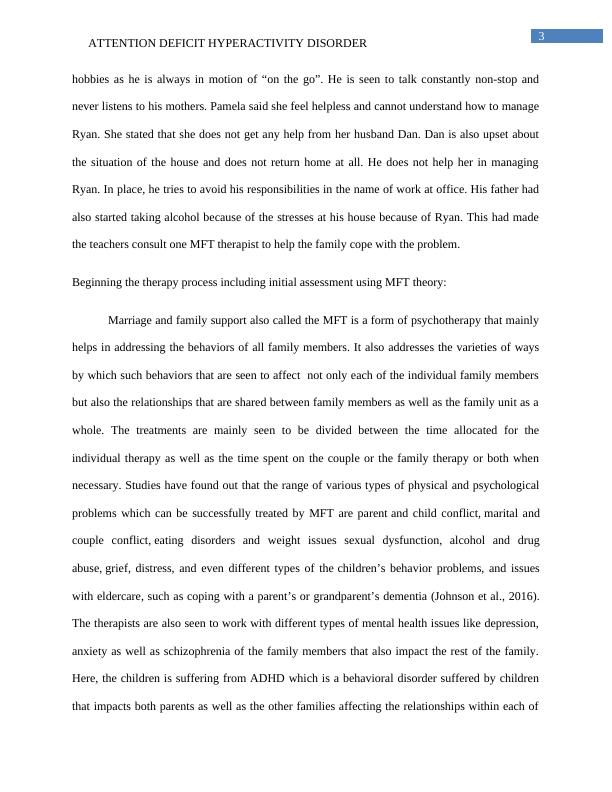Attention Deficit Hyperactivity Disorder: Symptoms, Diagnosis, and MFT Therapy
This article discusses interventions for ADHD in children and teens, with a focus on ADHD coaching.
14 Pages3912 Words189 Views
Added on 2023-04-20
About This Document
This assignment discusses the symptoms and diagnosis of Attention Deficit Hyperactivity Disorder (ADHD) in children. It also explores how Marriage and Family Therapy (MFT) can be applied to help families manage ADHD. The case study of a 7-year-old boy with ADHD and his family is presented, along with an analysis of the structural family therapy approach. The anticipated outcomes and termination of therapy are discussed, along with ethical concerns.
Attention Deficit Hyperactivity Disorder: Symptoms, Diagnosis, and MFT Therapy
This article discusses interventions for ADHD in children and teens, with a focus on ADHD coaching.
Added on 2023-04-20
ShareRelated Documents
End of preview
Want to access all the pages? Upload your documents or become a member.
(PDF) Attention Deficit Hyperactivity Disorder (ADHD)
|8
|1600
|37
Attention deficit hyperactivity disorder - Assignment PDF
|9
|2693
|60
ADHD: Symptoms, Causes, Diagnosis, and Management
|12
|2024
|315
Attention Deficit Hyperactivity Disorder1
|15
|4094
|15
Interview analysis Assignment PDF
|10
|2881
|45
Undiagnosed children with ADHD: the need to prevent them from failure in integrity and bullying in society
|26
|6250
|89




